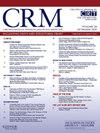肺动脉高压对二尖瓣导管边缘到边缘修复术后短期和长期预后的影响:一项荟萃分析。
IF 1.9
Q3 CARDIAC & CARDIOVASCULAR SYSTEMS
引用次数: 0
摘要
背景:肺动脉高压(pHTN)与二尖瓣经导管边缘到边缘修复(TEER)后发病率和死亡率增加有关,但其相关性尚不确定。本研究旨在评估pHTN对TEER后心血管结局的影响。方法:我们检索PubMed、Scopus和Medline,以确定报告pHTN患者TEER后结果的研究。利用随机效应模型,我们确定了肺动脉收缩压(PASP >50 mmHg)患者与无PASP患者临床结果的合并优势比(OR)。结果:我们纳入了7项研究,共27,965例患者。平均年龄79.9(±5.2)岁;53%为男性,75%为纽约心脏协会(NYHA) iii /IV级,中位随访360天。重度pHTN患者的院内全因死亡率较高(OR: 1.99, 95% CI: 1.69-2.34, p)。结论:重度pHTN与二尖瓣TEER患者的全因死亡率、MACE和心力衰竭再住院率升高相关。有必要进行前瞻性试验来验证研究结果,并确定早期干预是否能改善临床结果。本文章由计算机程序翻译,如有差异,请以英文原文为准。
Impact of pulmonary hypertension on short and long-term outcome after mitral transcatheter edge-to-edge repair: A meta-analysis
Background
Pulmonary hypertension (pHTN) has been associated with increased morbidity and mortality after mitral Transcatheter Edge-to-Edge Repair (TEER), but the association remains uncertain. This study aims to evaluate the impact of pHTN on cardiovascular outcomes following TEER.
Methods
We searched PubMed, Scopus, and Medline to identify studies reporting outcomes after TEER in individuals with pHTN. Utilizing a random-effects model, we ascertained a pooled odds ratio (OR) of clinical outcomes in patients with pulmonary artery systolic pressure (PASP >50 mmHg) vs. without (PASP <50 mmHg) severe pHTN.
Results
We included seven studies with 27,965 patients. The mean age was 79.9 (±5.2) years; 53 % were male, and 75 % were New York Heart Association (NYHA) class-III/IV with a median follow-up of 360 days. Patients with severe pHTN had higher odds of in-hospital all-cause mortality (OR: 1.99, 95 % CI: 1.69–2.34, p < 0.00001) and Major adverse cardiovascular events (MACE) (OR: 1.38, 95 % CI: 1.22–1.56, p < 0.00001) compared to patients without severe pHTN.
Conclusions
Severe pHTN is associated with increased risks of all-cause mortality, MACE, and higher heart failure rehospitalizations in patients undergoing mitral TEER. Prospective trials are necessary to validate the findings and determine if early intervention improves clinical outcomes.
求助全文
通过发布文献求助,成功后即可免费获取论文全文。
去求助
来源期刊

Cardiovascular Revascularization Medicine
CARDIAC & CARDIOVASCULAR SYSTEMS-
CiteScore
3.30
自引率
5.90%
发文量
687
审稿时长
36 days
期刊介绍:
Cardiovascular Revascularization Medicine (CRM) is an international and multidisciplinary journal that publishes original laboratory and clinical investigations related to revascularization therapies in cardiovascular medicine. Cardiovascular Revascularization Medicine publishes articles related to preclinical work and molecular interventions, including angiogenesis, cell therapy, pharmacological interventions, restenosis management, and prevention, including experiments conducted in human subjects, in laboratory animals, and in vitro. Specific areas of interest include percutaneous angioplasty in coronary and peripheral arteries, intervention in structural heart disease, cardiovascular surgery, etc.
 求助内容:
求助内容: 应助结果提醒方式:
应助结果提醒方式:


